Term archive
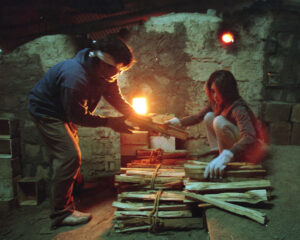
投稿タイプ:activities
Kyo-yaki Pottery/Kiyomizu-yaki Pottery Kiln Tour & Painting Experience (Sumiyama Pottery Village)
Tour a kyo-yaki/kiyomizu-yaki pottery (both local forms of Kyoto pottery) production studio and take part in a pottery-painting workshop. There are 10 different pottery rooms, and pottery on sale as well.
Paint on unglazed teacups, plates, etc.The finished pieces will be mailed to participants about 20 days after the workshop.
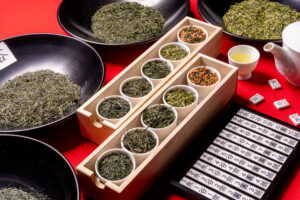
投稿タイプ:activities
Chakabuki, a Tea-Guessing Game (at Soenkoyuan Yantan)
Chakabuki is a fun tea-guessing game where you try to remember the flavor of the tea you drank at first, and identify it from among several different teas. Soenkoyuan Yantan, in Ujitawara Town, offers a program of chakabuki, which is easy to understand even for beginners.
Soenkoyuan Yantan is a facility renovated from a large tea factory in the Yuyadani area, the “birthplace” of sencha (one of the most common Japanese teas). The hospitality of the local community makes it a heartwarming gathering place. Here, you can discover the region's charm more through the tourist information they offer, local specialties including tea at the shop, various interesting tea-related experiences, and so on. In the cafe space, you can enjoy delicious tea and sweets. On weekends, lunch made with local ingredients is available as well, which offers a taste of a different side of the culture in this region.
(From Soenkoyuan Yantan, you can walk to the Birthplace of Nagatani Souen. He developed the Aosei Sencha Seihou method in 1738, which laid the foundation for the processing method of some of today’s Japanese green teas including sencha.)
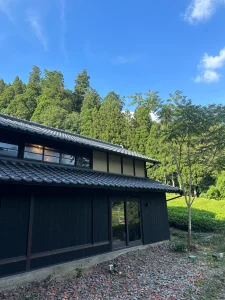
投稿タイプ:activities
Matcha farm Bed & Breakfast (farm-to-table meals and tour included.)
"Take in the tranquil tea fields of Wazuka, a hidden gem in Kyoto’s countryside, and immerse yourself in the world of organic, single-origin Japanese tea.
Their story
They opened Tea Moon, their Bed & Breakfast, to offer travelers the ultimate Japanese tea experience. Tea Moon overlooks d:matcha’s rolling tea fields and stands next to the 1000-year-old Hakusan Shrine. They renovated this traditional Japanese house in 2023, conserving its historic exterior while adapting it for modern comfort, as part of their mission to revitalize their historic green tea town.
The experience
They recommend to join their beloved farm tour & tasting . Guests who stay tea moon join at free.
…and have exclusive access to d:matcha’s multi-course farm-to-table meals (see images for sample menus). All dishes showcase local farmers’ ingredients and can be adjusted for dietary preferences.
Personalized activities (e.g., hiking, cooking classes, pottery tours) also available with advanced notice.
"
"Recommended itinerary for a relaxing long weekend
Property details
・2 bedrooms (western style queen beds)
・2 tatami mat living rooms
・Bathroom with a Japanese soaking tub & handmade tea soak
・Kitchen with new appliances (fridge, microwave, electric stove, pans, knives, plates & cutlery)
・Assortment of organic d:matcha tea
・Free wifi
・Free parking
"
"Policies
・3pm Check-in: Pick up keys from d:matcha Kyoto cafe (〒619-1203 Gonose 142, Yubune Wazuka-cho, Souraku-gun Kyoto-fu).
・11am Check-out
・Breakfast at 8:00am, Dinner at 6:00pm
・No smoking
・They welcome groups of 2-4 guests. Given the historical nature of the house, all guests must be over the age of 5. Please reach out with any questions.
・Free cancellation is available up to 14 days prior to the stay or within 24 hours of booking. After that, guests will forfeit the full cost of the stay. To cancel, email “info@dmatcha.com”"
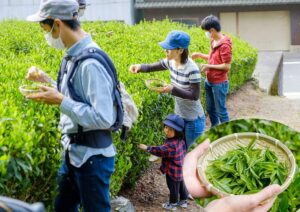
投稿タイプ:activities
Tea farm tour & tasting in Wazuka, Kyoto
Farm tour & tea flight with the passionate founder of d:matcha! Followed by tea-themed lunch overlooking their green fields in Wazuka, Kyoto, Japan. A unique deep dive into the world of Japanese tea.
Their experience runs from 9:30am to 1:15pm, and includes:
・Organic farm tour
・Tea picking → tea tempura
・Educational factory visit
・Tea flight (3 different cultivars of Sencha & Matcha) with sweets
・Lunch at d:matcha cafe (see images for menu)
Important logistics:
Tour begins at our cafe, in Wazuka, Kyoto Prefecture. Most international visitors arrive from Kyoto station (~60 min) or Nara station (~40 min), but you can also reach us from Shiga, Uji, and Osaka.
Daiki Tanaka, their founder, will conduct the tour himself (in English)!
They’re happy to accommodate dietary needs, please let them know of any.

投稿タイプ:activities
Wazuka Town Japanese Tea Tour (Kyoto Obubu Tea Farms)
Enjoy a variety of activities in the town of Wazuka with English-speaking staff and tea plantation owners, including tours of the tea fields and production facilities, tea tasting and production, and tea harvesting events.
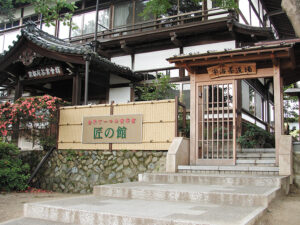
投稿タイプ:activities
Tea Brewing Experience (Takumi no Yakata)
Learn how to brew and savor delicious Uji tea while sharing information about the history, production process, and benefits of the three famous types of Japanese tea: gyokuro, matcha, and sencha.
Uji Tea Ceremony Hall Takumi-no Yakata was established by the Chamber of Kyoto Prefecture Tea as a place for training and exchange related to Uji tea for a broad range of people.
Visitors can relax with a cup of delicious Uji tea as they look out over the scenic Uji River.
Also in the neighborhood are the Tale of Genji Museum, as well as Byodo-in Temple and Uji-gami Shrine, both of which have been designated as World Cultural Heritage Sites. Visitors can drop in as they take a walk.
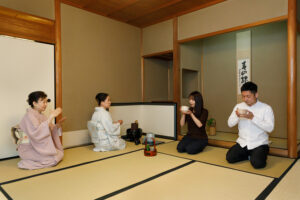
投稿タイプ:activities
Learn the Etiquette of Japanese Tea Ceremonies (at Taiho-an)
At Uji City Municipal Tea Ceremony House, Taiho-an, you can experience authentic Uji tea accompanied by a seasonal Japanese sweet. If you don’t know anything about Japanese tea ceremonies, there’s no problem. In the Making Tea Experience (Otemae Taiken), you can first watch a tea master, who is from Uji City Tea Ceremony Association, prepare matcha green tea in the traditional way. After savoring the sweet and matcha, try whisking your own bowl of matcha with a chasen (a tea whisk).
Please note that the matcha experiences are not available on certain days when they feature sencha (one of the most common Japanese teas, which you brew, not whisk to prepare). The sencha tea ceremony has a different appeal than matcha, and it is also interesting. The sencha days are held several times a month.
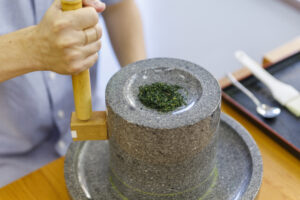
投稿タイプ:activities
Matcha Making with a Stone Mill (Ujicha Kobo of Fukujuen Uji Kobo)
Discover the art of matcha green tea. Try your hand at rotating a stone mill, grinding tea leaves called tencha into fine matcha powder that is used in tea ceremonies. Then, whisk your own matcha and savor it. Not only will you enjoy the authentic taste, but you'll also appreciate the preciousness of a bowl of tea, and understand the profound meaning behind the Japanese tradition of tea hospitality. (This experience lasts about 40 minutes.)
At this facility, you can actually learn tea ceremony etiquette in a tea-ceremony room, as well. Through this experience, you can gain a deeper understanding of Japanese culture. They also offer other experiences: tea leaf kneading, tea making on a ceramic plate, teacup creating, and many more.
In addition, you can savor a variety of dishes and sweets made with Uji tea. At a separate building Gyokuro Tei, a traditional Japanese style cafe, they offer meals and sweets using gyokuro (a type of high-quality Japanese tea). At the shop, you can find their original Uji teas, teaware and so on, too. Enjoy the full charm of Uji tea, beside the clear flow of the scenic Uji River.
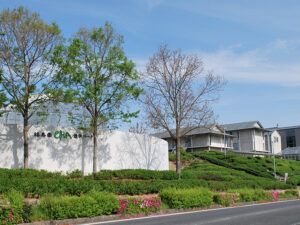
投稿タイプ:activities
Fukujuen CHA Experience Park
Less than an hour from Kyoto and Uji, the Fukujuen CHA Experience Park is a must for tea lovers. You can take an in-depth look at how tea is grown, harvested, processed, and enjoyed all over the world. Learn about traditional tea cultivation practices and the best way to prepare a wide variety of teas from researchers dedicated to making the perfect cup of tea. Here you can get hands on experience with almost every aspect of tea cultivation and preparation. There is a museum about the history of tea and its many uses, classes on preparing tea leaves, grinding match powder, and techniques for brewing tea. What’s more, they have example tea rooms from around the where you can learn about how people make and enjoy tea all over the world. All this makes the CHA Experience an essential part of any tour of Kyoto’s tea producing region.
・ Introduction to the history and types of tea, manufacturing process, history of Fukujuen, etc. with panels and videos
・ Exhibition of teas that are drunk all over the world
・ Exhibition of Japanese tea manufacturing equipment
・ Tour of tea gardens (visiting tea plants of various varieties in Japan and around the world and tea trees cultivated in greenhouses).

投稿タイプ:activities
Nonohana Plant-Based Dyeing Experience: Dye a one-of-a-kind item with your own hands
At the Nonohana Plant-Based Dyeing ("Kusakizome") Academy in Kyoto Prefecture's Ide-cho, you can try your hand at the "kusakizome" dyeing method. Kusakizome roughly translates to plant-based dyeing, in which, as the name suggests, you use pigments from plants to dye fabric. Seasonal plants are usually used for dyeing, but even the same plant grown in different a soil and climate can change the resulting colors. Kusakizome mostly uses the plants stems or braches to make dye, and flowers are rarely used. The beginners' course is about having fun learning and trying the kasakizome method, in which you cut and boil the plants to make the dye, and use the bokashi dyeing technique (dyeing in layers) to dye a silk shawl, which you can take home on the day of the activity. It's the perfect opportunity to create your very own one-of-a-kind piece.

投稿タイプ:events
Uji River Cormorant Fishing
Enter into the dramatic world of cormorants and fishermen unfolding on the surface of the summer night’s water. Known as a traditional summer event, this practice has a history that goes back to the Heian era (794-1185) and is mentioned in "Konjaku Monogatari" (A collection of tales written during the late Heian era) and "Kagero Nikki" (diary literature written during the Heian era).
Other: Chartered boat fees
10-passenger boat 27,500 yen
15-passenger boat 41,250 yen
20-passenger boat 55,000 yen
Shared boat fares
Adults 2,000 yen
Children 1,000 yen

投稿タイプ:events
TWINKLE JOYO Starlight Pageant
The natural winter scenes and objects illuminated in this event add poetic charm to the season in Joyo City. 600,000 illuminating lights and a 10m tall tree show off the city's wonder.
